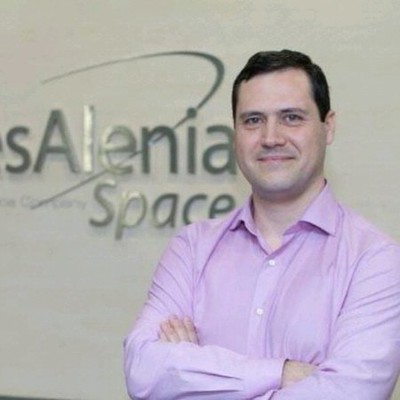Alfonso Rodríguez
Universidad Politécnica de Madrid, Madrid, Spain
Andrea Pinna
Sorbonne University, Paris, France
Diana Goehringer
TU Dresden, Dresden, Germany
Jean-Pierre David
Ecole Polytechnique de Montreal, Montreal, Canada
João M. P. Cardoso
University of Porto, Porto, Portugal
Karol Desnos
INSA Rennes - IETR laboratory, Rennes, France
Marek Gorgoń
AGH University of Science and Technology, Kraków, Poland
Michael Huebner
Brandenburg University of Technology, Cottbus-Senftenberg, Germany
Miguel Chavarrías
Universidad Politécnica de Madrid, Madrid, Spain
Paolo Meloni
University of Cagliari, Cagliari, Italy
Pierre Langlois
Ecole Polytechnique de Montreal, Montreal, Canada
Sebastien Pillement
University of Nantes - IETR, Nantes, France
Sergio Petruz
TU Dresden, Dresden, Germany
Tomasz Kryjak
AGH University of Science and Technology, Kraków, Poland
Andrea Pinna
Sorbonne Univeristy, France
Andrés Otero
Universidad Politécnica de Madrid, Spain
Arnaldo Oliveira
Universidade de Aveiro - DETI / Instituto de Telecomunicações, Portugal
Bertrand Granado
Sorbonne Université, France
Christian Pilato
Politecnico di Milano, Italy
Christopher Claus
Robert Bosch GmbH,
Daniel Chillet
IRISA/ENSSAT University of Rennes 1, France
Diana Goehringer
TU Dresden, Germany
Dimitrios Soudris
National Technical University of Athens, Greece
Eduardo de La Torre
Universidad Politécnica de Madrid, Spain
Francesca Palumbo
Information Eng. Unit - PolComIng - University of Sassari, Italy
Frank Hannig
Friedrich-Alexander University Erlangen-Nürnberg, Germany
Gabriel Caffarena
University CEU San Pablo, Spain
Gustavo Marrero Callico
Universidad de Las Palmas de Gran Canaria, Spain
Guy Gogniat
Université de Bretagne Sud - UEB, France
Jean Francois Nezan
INSA Rennes, IETR laboratory, France
Jean Pierre David
Ecole Polytechnique de Montréal,
Joao Cardoso
University of Porto, Portugal
João Canas Ferreira
University of Porto, Portugal
Jorge Portilla
Universidad Politécnica de Madrid, Spain
Kevin J. M. Martin
Lab-STICC - Université de Bretagne-Sud,
Marek Gorgon
AGH University of Science and Technology, Poland
Martin Danek
Daiteq s.r.o., Czechia
Mateusz Komorkiewicz
IEEE, Poland
Maxime Pelcat
IETR/INSA, France
Milos Drutarovsky
Technical University of Kosice, Slovak Republic
Nuno Roma
Universidade de Lisboa, Portugal
Olivier Romain
University of Cergy Pontoise, France
Oscar Gustafsson
Linköping University, Sweden
Paolo Meloni
University of Cagliari, Italy
Ruben Salvador
CentraleSupélec - IETR, France
Sebastien Pillement
University of Nantes - IETR, France
Tomasz Kryjak
AGH University of Science and Technology, Poland
Yannick Le Moullec
Tallinn University of Technology, Estonia
Francesco Ratto
Università degli Studi di Cagliari, Italy
Claudio Rubattu
University of Sassari, Italy
Georgios Zervakis
University of Patras, Greece




